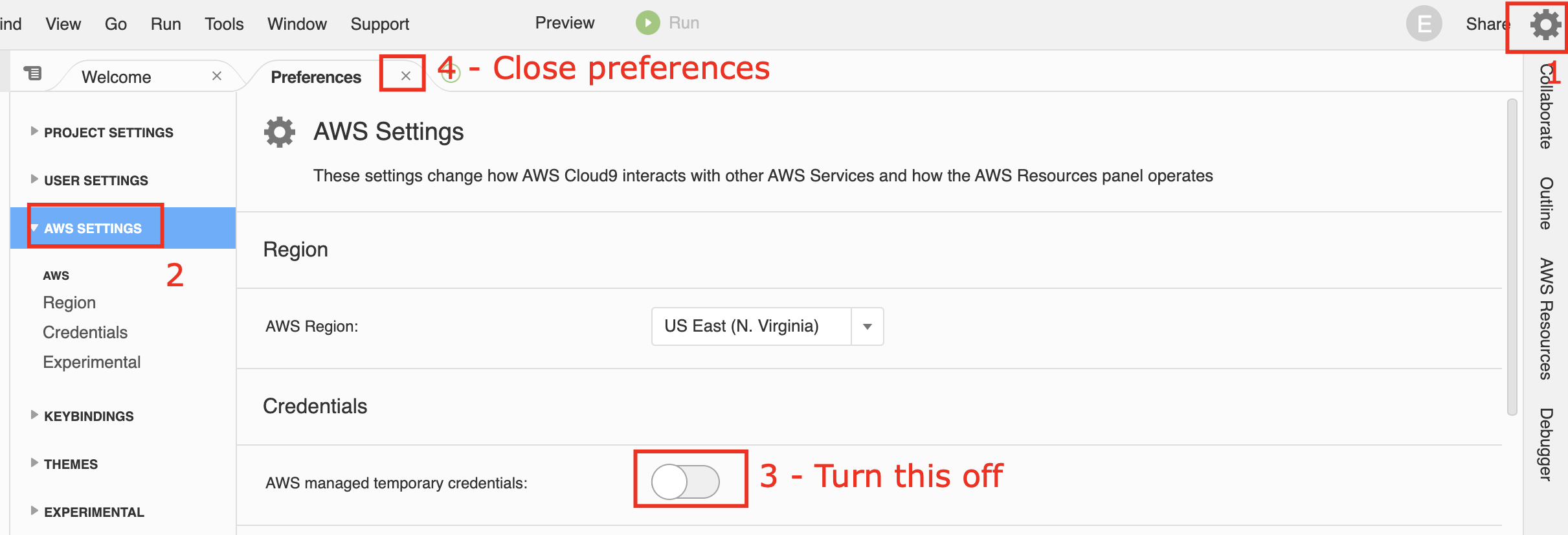Update IAM settings for your Workspace
Cloud9 normally manages IAM credentials dynamically. For this workshop we will disable it and rely on the IAM role instead.
- Return to your workspace and click the gear icon (in top right corner), or click to open a new tab and choose “Open Preferences”
- Select AWS SETTINGS
- Turn off AWS managed temporary credentials
- Close the Preferences tab

To ensure temporary credentials aren’t already in place we will also remove any existing credentials file:
rm -vf ${HOME}/.aws/credentials
We should configure our aws cli with our current region as default.
If you are at an AWS event, ask your instructor which AWS region to use.
export ACCOUNT_ID=$(aws sts get-caller-identity --output text --query Account)
export AWS_REGION=$(curl -s 169.254.169.254/latest/dynamic/instance-identity/document | jq -r '.region')
Check if AWS_REGION is set to desired region
test -n "$AWS_REGION" && echo AWS_REGION is "$AWS_REGION" || echo AWS_REGION is not set
Let’s save these into bash_profile
echo "export ACCOUNT_ID=${ACCOUNT_ID}" | tee -a ~/.bash_profile
echo "export AWS_REGION=${AWS_REGION}" | tee -a ~/.bash_profile
aws configure set default.region ${AWS_REGION}
aws configure get default.region
Validate the IAM role
Use the GetCallerIdentity CLI command to validate that the Cloud9 IDE is using the correct IAM role.
aws sts get-caller-identity
The output assumed-role name should contain:
VALID
If the Arn contains the role name from above and an Instance ID, you may proceed.
INVALID
If the _Arn contains TeamRole, MasterRole, or does not match the role name output above, DO NOT PROCEED. Go back and confirm the steps on this page.